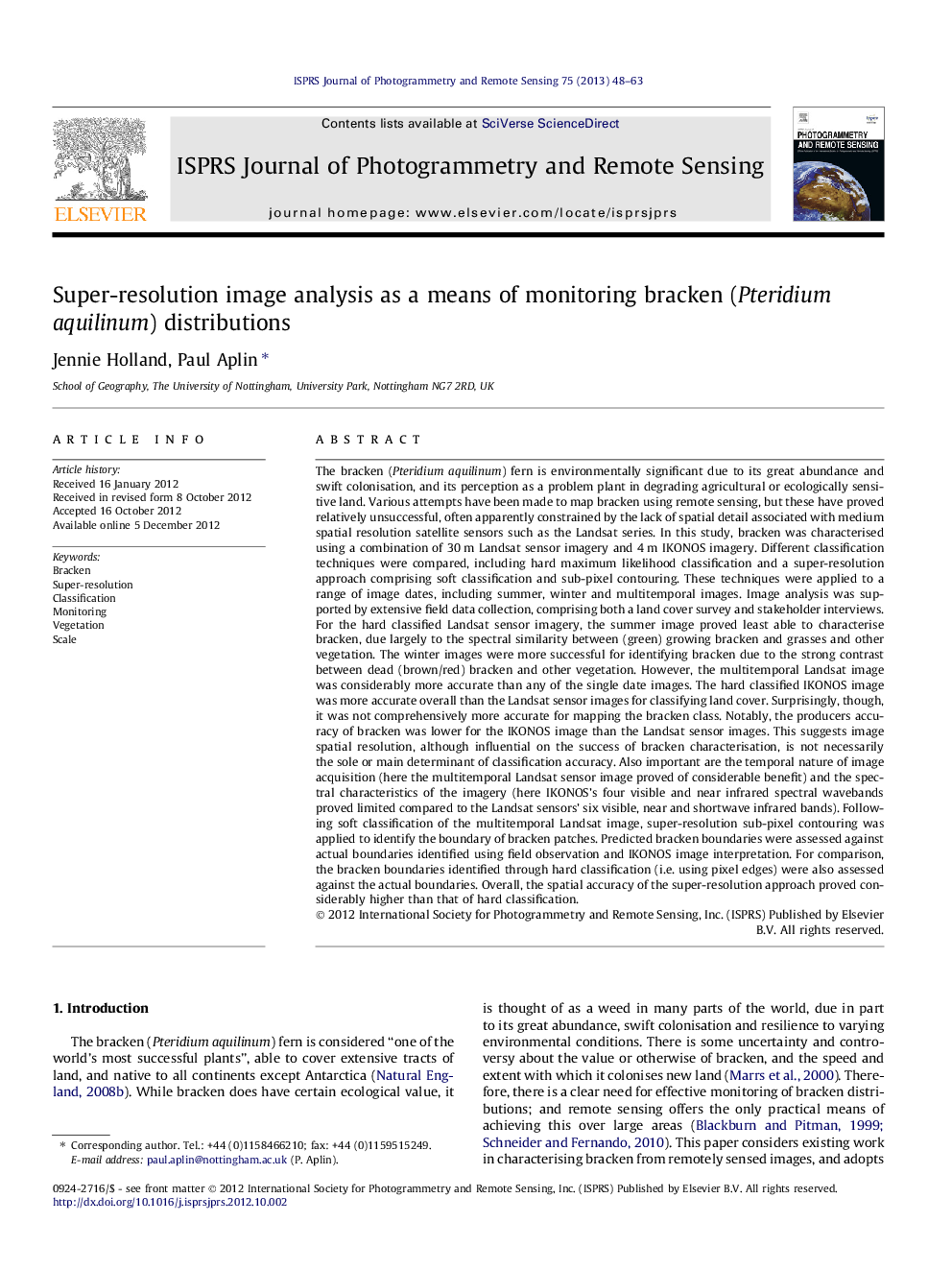| Article ID | Journal | Published Year | Pages | File Type |
|---|---|---|---|---|
| 555123 | ISPRS Journal of Photogrammetry and Remote Sensing | 2013 | 16 Pages |
The bracken (Pteridium aquilinum) fern is environmentally significant due to its great abundance and swift colonisation, and its perception as a problem plant in degrading agricultural or ecologically sensitive land. Various attempts have been made to map bracken using remote sensing, but these have proved relatively unsuccessful, often apparently constrained by the lack of spatial detail associated with medium spatial resolution satellite sensors such as the Landsat series. In this study, bracken was characterised using a combination of 30 m Landsat sensor imagery and 4 m IKONOS imagery. Different classification techniques were compared, including hard maximum likelihood classification and a super-resolution approach comprising soft classification and sub-pixel contouring. These techniques were applied to a range of image dates, including summer, winter and multitemporal images. Image analysis was supported by extensive field data collection, comprising both a land cover survey and stakeholder interviews. For the hard classified Landsat sensor imagery, the summer image proved least able to characterise bracken, due largely to the spectral similarity between (green) growing bracken and grasses and other vegetation. The winter images were more successful for identifying bracken due to the strong contrast between dead (brown/red) bracken and other vegetation. However, the multitemporal Landsat image was considerably more accurate than any of the single date images. The hard classified IKONOS image was more accurate overall than the Landsat sensor images for classifying land cover. Surprisingly, though, it was not comprehensively more accurate for mapping the bracken class. Notably, the producers accuracy of bracken was lower for the IKONOS image than the Landsat sensor images. This suggests image spatial resolution, although influential on the success of bracken characterisation, is not necessarily the sole or main determinant of classification accuracy. Also important are the temporal nature of image acquisition (here the multitemporal Landsat sensor image proved of considerable benefit) and the spectral characteristics of the imagery (here IKONOS’s four visible and near infrared spectral wavebands proved limited compared to the Landsat sensors’ six visible, near and shortwave infrared bands). Following soft classification of the multitemporal Landsat image, super-resolution sub-pixel contouring was applied to identify the boundary of bracken patches. Predicted bracken boundaries were assessed against actual boundaries identified using field observation and IKONOS image interpretation. For comparison, the bracken boundaries identified through hard classification (i.e. using pixel edges) were also assessed against the actual boundaries. Overall, the spatial accuracy of the super-resolution approach proved considerably higher than that of hard classification.
